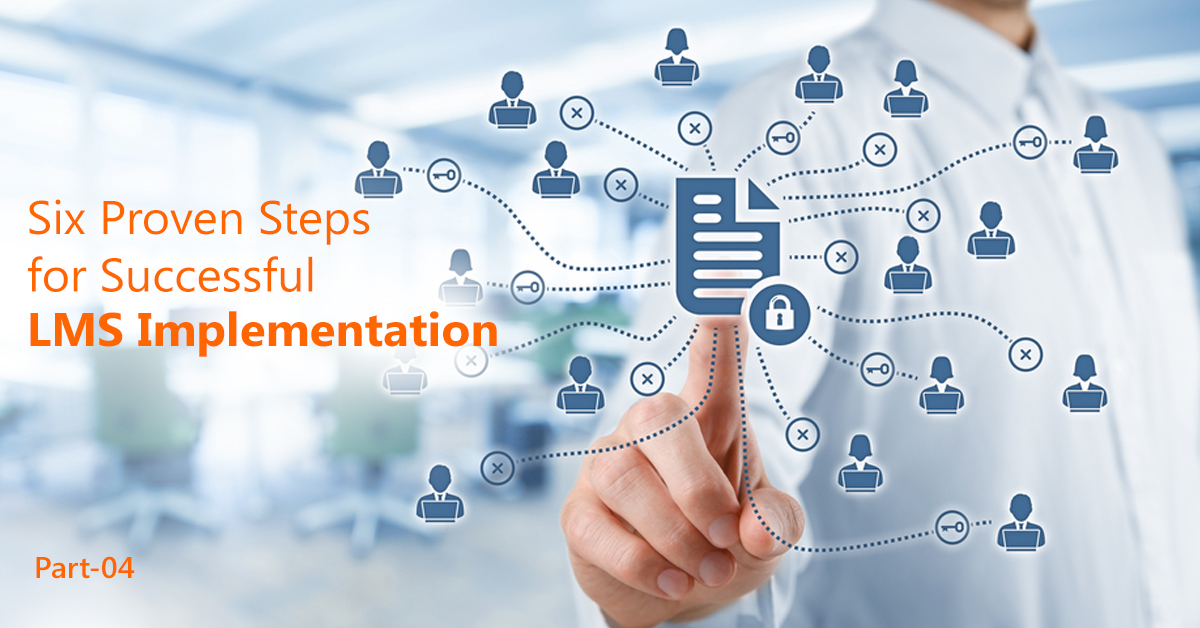Implementing an LMS can be an extremely tedious process if any of these six steps are not performed in a proper manner. We have discussed the first 3 steps of this process, namely, Planning, Configuration, and Integration. In this blog, we are back with the 4th step i.e. Migration of data and how it can be done for successful implementation of an LMS.
On this Page
Course and Data Migration

After the system and LMS are well integrated, the courses and data need to be migrated to the LMS. This is important if you are switching from one LMS to another or moving from a custom LMS to an off-the-shelf product. Your training data and courses need to be transferred from your legacy system to the new LMS. Because it involves the transfer of crucial information, it can be a complicated task during implementation. To keep it simple, you must figure out a sequence to transfer this information. Identifying and addressing any incompatibilities between the way the information and training material was stored on the legacy system versus how it will be stored on the new LMS is important to avoid loss of information or any further complications in this process. Any incompatibility between the legacy system and your new LMS will not allow you to transfer data unless the information is reformatted as per the settings of the new LMS.
Data Retention Policy

Migrating courses and data requires clarity on how much data needs to be migrated. This becomes your first step in data migration. It is recommended to move as little data as possible. This is because, the more data you migrate, the more is the probability for errors and problems to occur during the migration process, thereby delaying the LMS implementation process. Here, your IT and legal departments can be of good help to guide you through data retention and migration policies and help you make informed decisions. This way, if you wish to retain training records of employees for the past five years, you may not have to take that effort of moving data of the last 10 years. The data of five years can be transferred while the remaining old data can be archived. In case you require data from the archived folder, your IT team can restore it and help you with the information.
Exceptions like when certain courses are prerequisites for other courses, you must also consider migration of these courses. Your compliance and certification courses also fall into this category.
User Data

The next step after deciding how much data needs to be migrated, is to load users into the new LMS. In the case of establishing a feed from the HR system, consider developing, implementing, and testing it before migrating anything related to user information. Otherwise, moving user accounts from the legacy system to the new LMS will be required.
Standards-Based Courseware Migration

The process of moving from one corporate LMS to another is a little complex. It involves implementation of SCORM-based courses and then reinstalling SCORM packages for each of the courses on the new LMS. Some LMSes may enable you to do it through a batch method that will help you queue up the installation of multiple courses while some LMS products will require you to manually install each course, one at a time.
Also, even if the SCORM courses may have worked smoothly on your legacy system, these may require certain adjustments to work properly on your new LMS. To know how it can be done using Abara LMS, get in touch with us.
Course Data Migration

To migrate course data to a corporate LMS, you will have to extract course titles, descriptions, schedules, locations, metadata, instructors, and various other course related information as per the new LMS specifications, and import it to your new LMS. Contact us to implement Abara LMS for your corporate training requirements.
Transcript Migration

Once your courses and user accounts are migrated and implemented, the final step is to transfer your legacy transcript to the new LMS. Transcripts refer to the relationship between the user and the courses. Transcripts need to be carefully moved only after the data of your users and courses are transferred because it requires both, the users and the courses in the system before migrating to the new system.
To see if data is migrated properly, test a sample of a user, course, and transcript together.
3 Stages of Migration
User, course, and transcript migration must be done in three stages to avoid any loss of information. The first stage includes migrating a relatively small sample of information and verifying the effectiveness of the migration process. The second stage involves transfer of information to date. This will enable you to improve course setups and configure features and functionalities that could not be done in the legacy system. With this you will also be able to perform user-acceptance testing. The last and final stage involves transferring data that was added or changed during the second stage of data migration. This stage occurs mostly just before you go live.
So, if you plan to implement an LMS successfully, ensure your data and courses are migrated in a proper sequence so that there are no further complications in the implementation. If you have any queries about migration or any of the previously discussed steps (Planning, Configurations, and Integration), feel free to connect with us today!
In our next blog, we’ll be speaking about the 5th Step, i.e. Testing. So, stay tuned.

